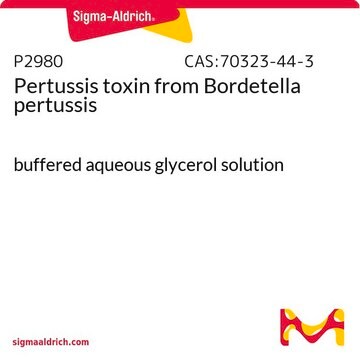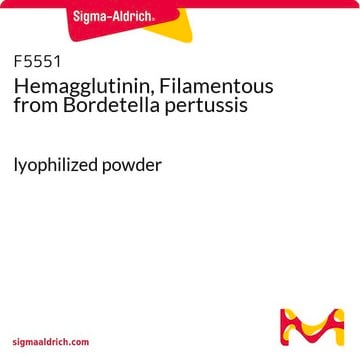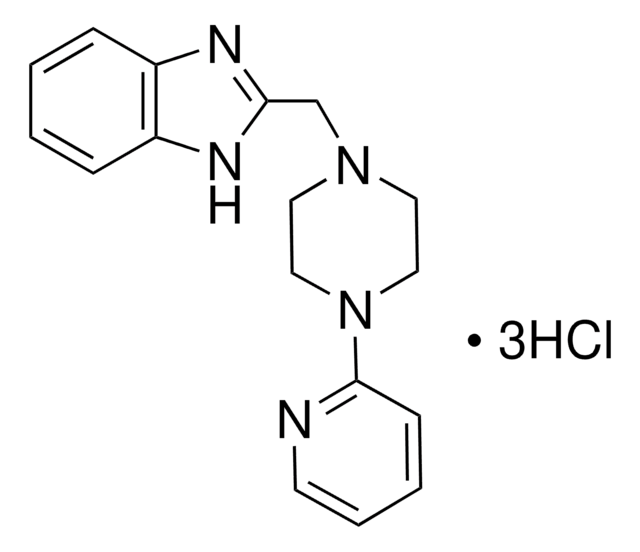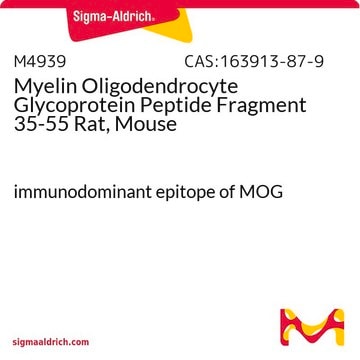SAE0066
Adenylyl Cyclase Toxin from Bordetella pertussis
Iniciar sesiónpara Ver la Fijación de precios por contrato y de la organización
About This Item
Código UNSPSC:
12352200
NACRES:
NA.26
Productos recomendados
origen biológico
Bordetella pertussis Tohama I
Nivel de calidad
Análisis
≥70%
formulario
liquid
actividad específica
≥ 50 units/mg protein
técnicas
cell culture | mammalian: suitable
idoneidad
suitable for molecular biology
aplicaciones
detection
temp. de almacenamiento
−20°C
Información sobre el gen
Bordetella pertussis Tohama I ... CyaA(69600712)
Descripción general
Research area: IMMUNO AND CKS
Adenylate Cyclase Toxin (ACT or CyaA) is a member of the extensive family of toxins known as Repeat in Toxin (RTX), which are produced by Gram-negative organisms. ACT is encoded by the cyaA gene and secreted extracellularly in the form of a soluble protein. It exhibits both adenylate cyclase enzymatic activity and hemolytic activity. The synthesis, maturation, and secretion of ACT are regulated by the CyaCABD operon. Moreover, its specific cellular receptor, CD11b/CD18 integrin (αMβ2, Mac-1, or CR3), is expressed on myeloid phagocytes.
Adenylate Cyclase Toxin (ACT or CyaA) is a member of the extensive family of toxins known as Repeat in Toxin (RTX), which are produced by Gram-negative organisms. ACT is encoded by the cyaA gene and secreted extracellularly in the form of a soluble protein. It exhibits both adenylate cyclase enzymatic activity and hemolytic activity. The synthesis, maturation, and secretion of ACT are regulated by the CyaCABD operon. Moreover, its specific cellular receptor, CD11b/CD18 integrin (αMβ2, Mac-1, or CR3), is expressed on myeloid phagocytes.
Aplicación
Adenylyl Cyclase Toxin from Bordetella pertussis has been used as Gα(i/o) inhibitor to study the involvement of the sphingosine 1-phosphate receptor 2/Gα(12/13)/MAPK signaling pathway in the priming and activation of NLRP3 inflammasome during cholestatic liver injury.
Acciones bioquímicas o fisiológicas
Adenylate Cyclase Toxin (CyaA) is responsible for inhibiting the phagocytic activities of neutrophils and macrophages by impairing oxidative response and chemotaxis, ultimately leading to cell apoptosis or necrosis. Additionally, ACT can upregulate the expression of MHC class II and costimulatory molecules on dendritic cells, thereby reducing proinflammatory cytokine production.
Código de clase de almacenamiento
10 - Combustible liquids
Clase de riesgo para el agua (WGK)
WGK 3
Punto de inflamabilidad (°F)
Not applicable
Punto de inflamabilidad (°C)
Not applicable
Certificados de análisis (COA)
Busque Certificados de análisis (COA) introduciendo el número de lote del producto. Los números de lote se encuentran en la etiqueta del producto después de las palabras «Lot» o «Batch»
¿Ya tiene este producto?
Encuentre la documentación para los productos que ha comprado recientemente en la Biblioteca de documentos.
Los clientes también vieron
Pertussis toxin and adenylate cyclase toxin: key virulence factors of Bordetella pertussis and cell biology tools
Carbonetti NH
Future Microbiology, 5, 455?469-455?469 (2010)
Understanding the Mechanism of Translocation of Adenylate Cyclase Toxin across Biological Membranes
Ostolaza H, et al.
Toxins, 9(10), 295-295 (2017)
Bioengineering of Bordetella pertussis Adenylate Cyclase Toxin for Antigen-Delivery and Immunotherapy
Chenal A and Ladant D
Toxins, 10(7), 302-302 (2018)
NLRP3 inflammasome priming and activation in cholestatic liver injury via the sphingosine 1-phosphate/S1P receptor 2/G?(12/13)/MAPK signaling pathway
Hou L, et al.
Journal of Molecular Medicine, 99, 273?288-273?288 (2021)
Lei Hou et al.
Journal of molecular medicine (Berlin, Germany), 99(2), 273-288 (2021-01-04)
NLRP3 inflammasome-driven inflammation represents a key trigger for hepatic fibrogenesis during cholestatic liver injury. However, whether sphingosine 1-phosphate (S1P) plays a role in NLRP3 inflammasome priming and activation remains unknown. Here, we found that the expression of NLRP3 in macrophages
Nuestro equipo de científicos tiene experiencia en todas las áreas de investigación: Ciencias de la vida, Ciencia de los materiales, Síntesis química, Cromatografía, Analítica y muchas otras.
Póngase en contacto con el Servicio técnico










